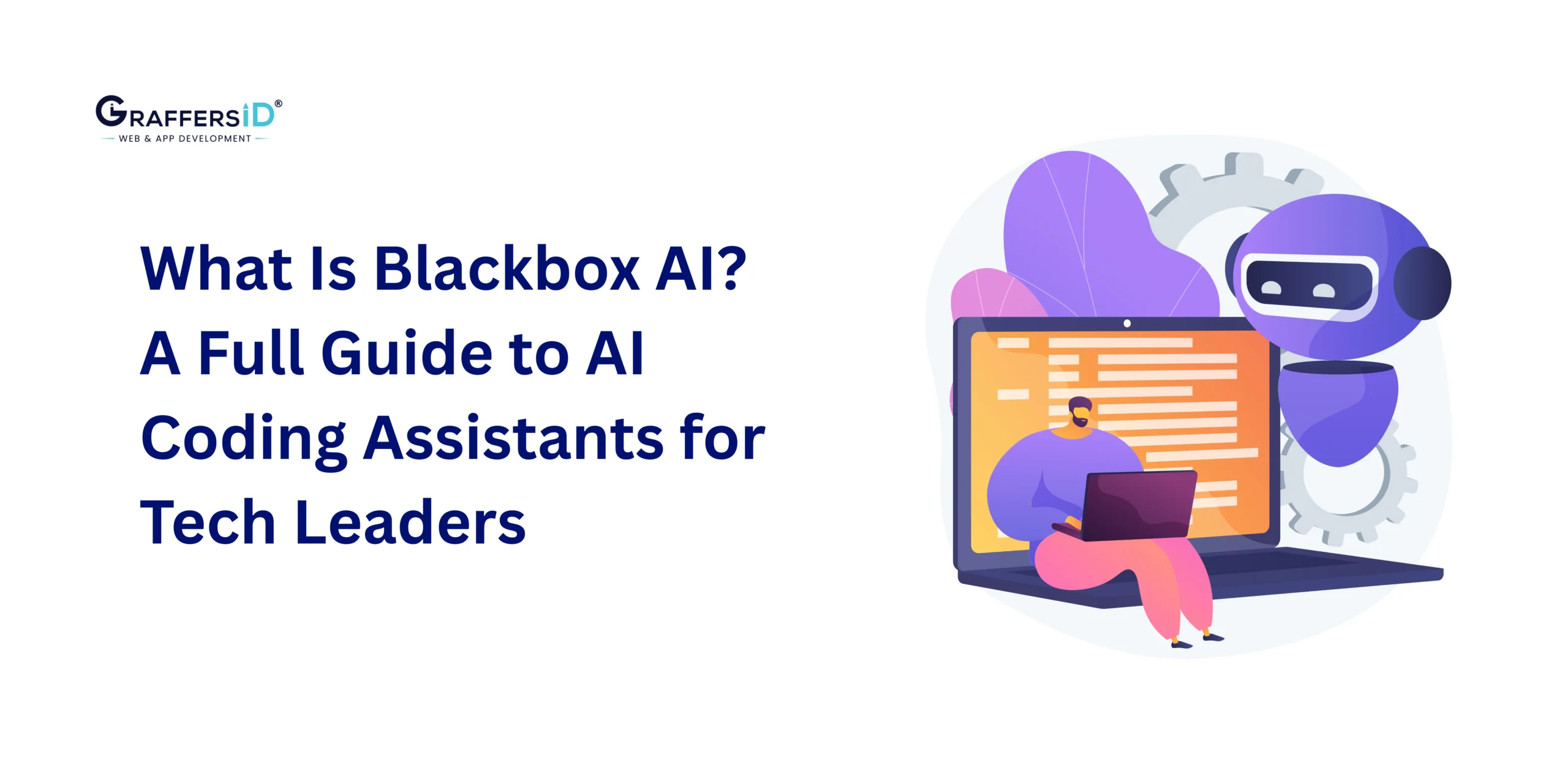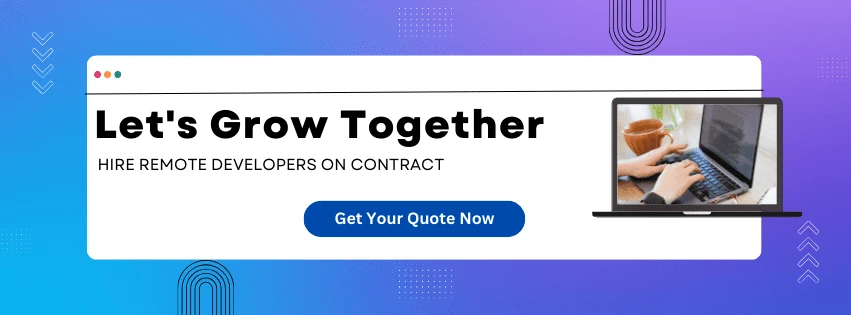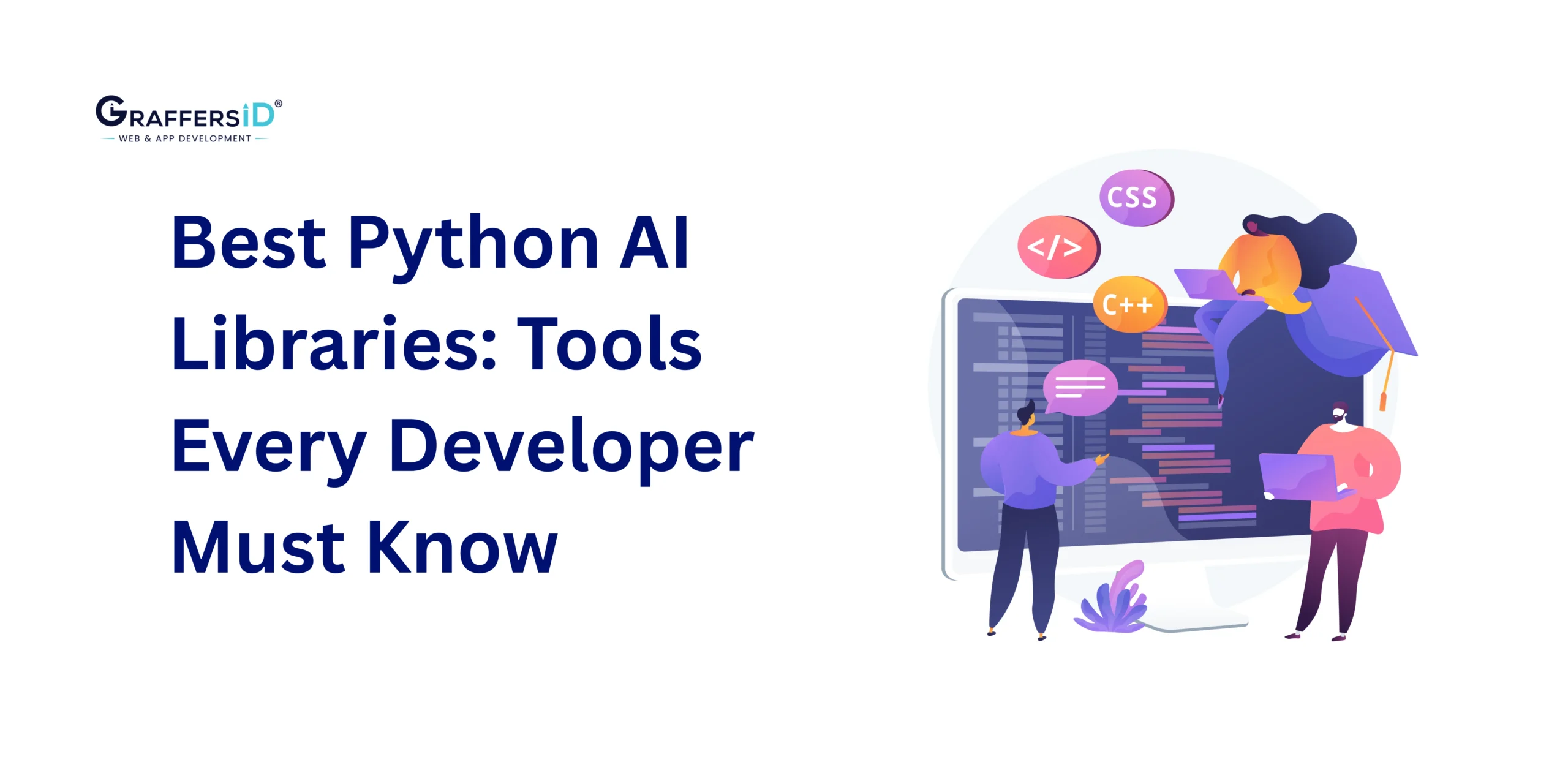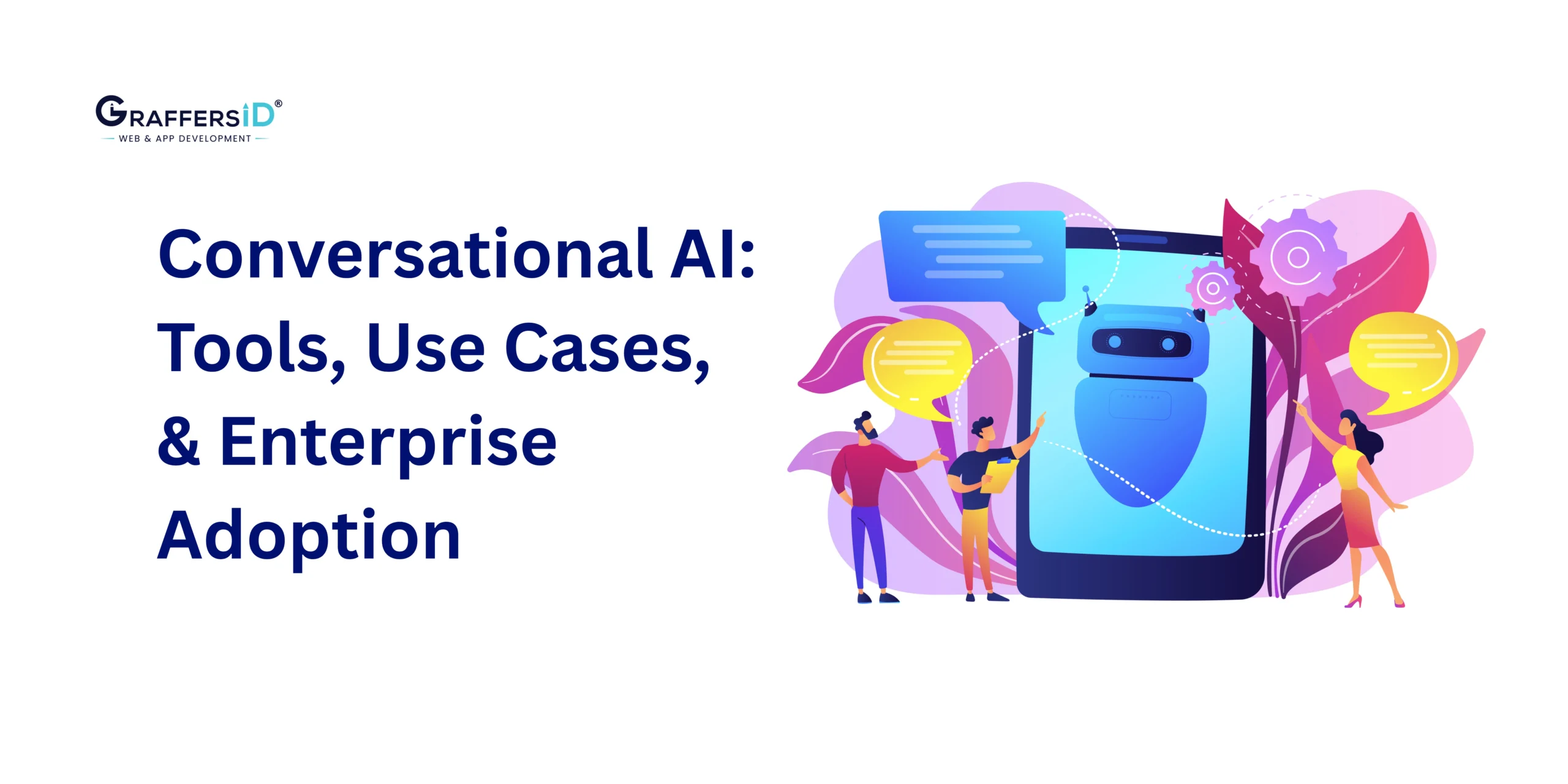In 2026, software development has entered a new era, one where speed, accuracy, and automation define the success of engineering teams. Artificial intelligence is no longer an experimental add-on; it’s a standard part of how modern developers write, review, and deploy code. Among the tools transforming this landscape, Blackbox AI stands out as a powerful coding assistant built to simplify complex tasks and help teams deliver better software faster.
Unlike traditional code-completion tools, Blackbox AI understands context, translates between languages, generates full functions, and even explains existing code, all within your favorite IDE or browser. It’s changing how developers collaborate, troubleshoot, and innovate.
This guide explores how Blackbox AI is shaping software development in 2026, what it does, how it works, real-world use cases, potential risks, comparisons with other coding assistants, and practical steps for CTOs and tech leaders to adopt it effectively.
What is Blackbox AI?
Blackbox AI is an AI-powered coding assistant designed to speed up the writing, comprehension, and optimization of code by developers. It directly connects with widely used IDEs and browsers and supports more than 20 programming languages.
Using modern large language models (LLMs) trained on vast datasets, Blackbox AI can:
- Autocomplete code in real time
- Generate entire functions or scripts
- Translate code across languages
- Explain complex logic in simple terms
This makes it an effective tool for increasing software delivery speed and developer efficiency.
💡 Did You Know?
Developers using tools like Blackbox AI can automate up to 40% of repetitive coding tasks, freeing up more time for architecture and innovation.
How Does Blackbox AI Work?
Blackbox AI uses deep learning models like:

1. Neural Networks: for recognizing and adapting to code patterns
2. Transformers: enabling context-aware understanding of programming syntax
3. Sequence-to-Sequence Models: supporting code translation and generation tasks
These models make intelligent, adaptable recommendations based on analysis of code inputs and natural language prompts, which speeds up and improves the intuitiveness of coding.
Use Cases of Blackbox AI in Software Development & IT Workflows
Here’s how top teams are using Blackbox AI in 2026.
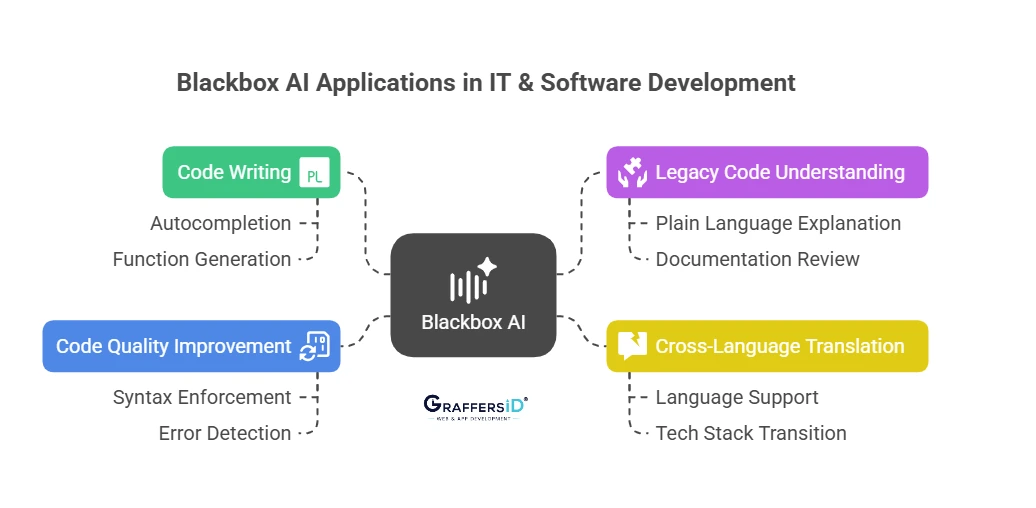
1. Accelerating Code Writing and Autocompletion
Blackbox AI generates complete functions, suggests the best syntax, and autocompletes lines depending on context, all of which increase developer productivity. This reduces repetitive work and speeds up project completion times, particularly for SaaS and startup teams that run rapidly.
2. Understanding and Explaining Legacy Code
One of the main advantages of Blackbox AI is its ability to explain complex or undocumented code in simple terms. Teams that are taking over legacy systems, onboarding new developers, or performing audits and documentation reviews will find this to be quite helpful.
3. Cross-Language Translation and Migration
Blackbox AI facilitates smooth logic translation between languages (e.g., Python to JavaScript) and supports more than 20 programming languages. It facilitates tech stack transitions and allows you to explore performance-optimized implementations without requiring manual rewrites.
4. Improving Code Quality and Consistency
While not a substitute for manual review, Blackbox AI enforces cleaner syntax, standard naming conventions, and basic error detection. This improves code consistency and maintainability, particularly in distributed or cross-functional teams.
Why Should Tech Leaders Consider Adopting Blackbox AI in 2025?
Tools like Blackbox AI are becoming crucial for effectively scaling development as companies strive to innovate quickly with smaller teams. This is why it should be part of your tech stack:

- Faster Development Cycles: Autocomplete and code generation features save time spent on repeated tasks, resulting in faster releases and shorter sprints.
- Boosted Developer Productivity: Even with remote or lean teams, developers focus more on the essential logic while the AI manages syntax, translation, and explanations.
- Better Code Quality at Scale: Blackbox AI eliminates early-stage errors, increases consistency, and streamlines onboarding by providing concise, inline explanations.
- Legacy & Multi-Stack Support: It helps teams refactor legacy code, explain undocumented logic, and migrate across languages without full rewrites.
- Strategic AI Adoption Signal: Using Blackbox AI showcases your organization’s innovation-readiness, supports developer retention, and strengthens stakeholder confidence.
Key Risks and Considerations When Using Blackbox AI
While Blackbox AI boosts productivity, tech leaders must weigh key risks before deploying it at scale:
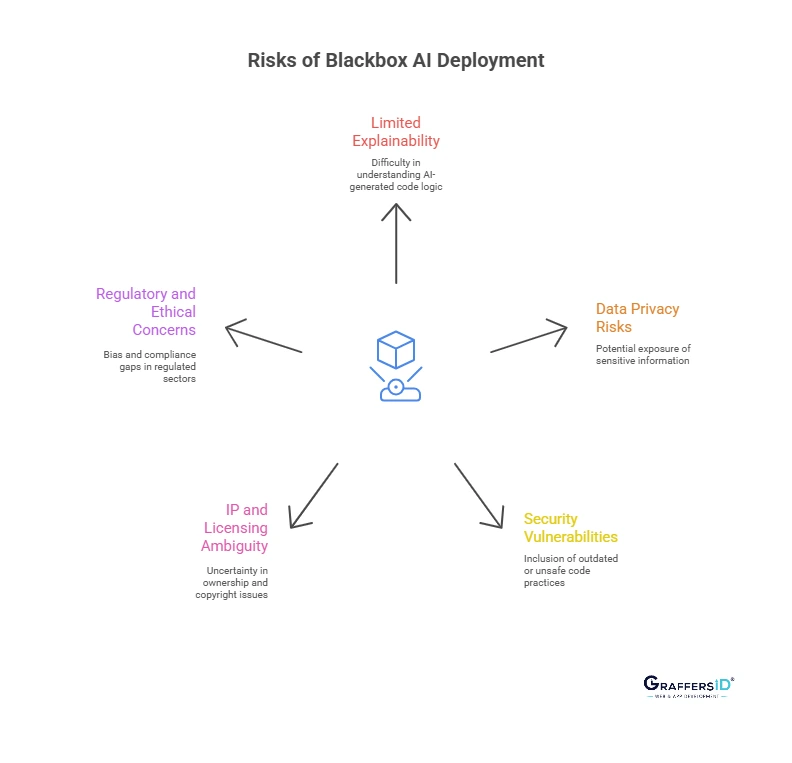
- Limited Explainability: AI-generated code may “work,” but its internal logic or rationale might not always be fully documented. Teams must ensure traceability, comments, and reviewability.
- Data Privacy: Pasting sensitive or proprietary code into the tool can risk data leaks. Enforce strict usage policies to avoid exposing PII or confidential logic.
- Security Issues: AI-generated code may default to convenience over hardened security. You still need static analysis, penetration testing, and security best practices.
- Governance & Compliance: In regulated industries (finance, healthcare, and defense), you need policies around AI-generated code, code review, audit trails, and ethical AI usage.
- Regulatory and Ethical Concerns: In regulated sectors, AI outputs may introduce bias or compliance gaps. Ensure proper audits, documentation, and ethical usage frameworks are in place.
Blackbox AI vs. Other AI Coding Assistants (2026 Comparison)
Here’s a snapshot comparison for tech leaders evaluating options:
| Feature | Blackbox | GitHub Copilot | CodeWhisperer | Tabnine | Codeium |
| Code Autocompletion | Yes | Yes | Yes | Yes | Yes |
| Code Explanation | Yes | Limited | No | No | Yes |
| Multi-language Support | 20+ languages | Yes | Yes | Yes | Yes |
| Security Focus | Moderate | Moderate | Strong | Strong | Moderate |
| IDE Integration | VS Code, Browser | Deep IDE Support | AWS, IDEs | Wide Support | Wide Support |
Note: The data above reflects the state in 2026 and is simplified for quick comparison. Leaders should evaluate each tool according to their organizational requirements.
Future Trends for Blackbox AI and Development Workflows
Looking ahead to 2026, here are the important trends that technology leaders should watch:
-
End-to-end DevOps & CI/CD Integration: Expect deeper embedding of AI assistants into pull requests, merge requests, test pipelines, and deployment workflows.
-
Project-wide Contextual Intelligence: AI models will shift from snippet-based suggestions to full-application context awareness (architecture, dependencies, and runtime behavior).
-
Enterprise Federated/On-Prem Deployment: To satisfy security/compliance, many organizations will adopt on-prem or private cloud models of tools like Blackbox AI.
-
Team-based Learning & Personalization: AI will learn from your organization’s repository, patterns, and style guides to deliver truly tailor-made suggestions.
-
Multimodal Development: Voice, image (UI mock-ups), and design-to-code workflows will become native; developers will “talk” to the code rather than manually type everything.
-
Shift from Code Writing to Automation of Logic: Developers will spend more time defining what to build and less on the “how,” as the assistant handles more of the implementation.
How Should CTOs Implement Blackbox AI to Drive Productivity?
Here’s a practical roadmap for adopting Blackbox AI within your organization:
1. Define Objectives & Metrics: Set measurable KPIs: e.g., reduction in boilerplate tasks, faster onboarding time, fewer code review iterations, and fewer bugs introduced.
2. Pilot with a Controlled Team: Select a high-visibility team, apply Blackbox AI, monitor outcomes, and document lessons.
3. Establish Usage Guidelines & Review Protocols: Decide when AI-generated code is appropriate, mandatory review steps, and style/architecture gate-checks.
4. Train & Upskill Developers: Provide training sessions on how to use Blackbox effectively and how to validate suggestions and avoid pitfalls.
5. Embed into Workflow: Integrate with IDEs, chat channels, code review tools, and commit pipelines.
6. Measure ROI Over Time: Track metrics such as release cycle length, developer throughput, bug rate, refactor time, and satisfaction/adoption.
7. Scale Carefully & Govern Smartly: Once the pilot proves value, roll out team-wide and ensure compliance/security/governance policies are in place.
8. Continuous Feedback & Optimization: Collect developer feedback, iterate on prompts, customize the AI assistant to your codebase, track drift, and update best practices.
Final Thoughts
By 2026, AI-driven development is no longer just a competitive advantage; it’s the basis of how high-performing engineering teams operate. Tools like Blackbox AI are reshaping the developer experience from the ground up, transforming code generation, translation, and review into a faster, smarter, and more context-aware process.
What makes Blackbox AI stand out is its developer-first design, deep workflow integration, and multi-language intelligence, allowing teams to focus less on syntax and more on innovation. For CTOs, COOs, and technology leaders, adopting Blackbox AI isn’t about replacing developers; it’s about amplifying their potential, improving software velocity, and setting the stage for a new era of intelligent development.
Enterprises that embrace this shift today will gain a decisive edge, not just in productivity, but in building scalable, future-ready digital products that adapt to constant technological change.
At GraffersID, we help global enterprises build scalable, secure, and custom AI-driven software solutions. Our remote AI developers specialize in modern tech stacks and intelligent automation, helping you go from concept to deployment faster.
Hire top AI developers from GraffersID and start building your next-generation software solution today.
